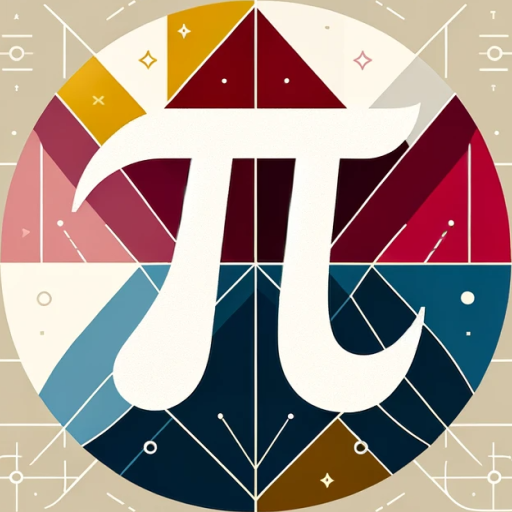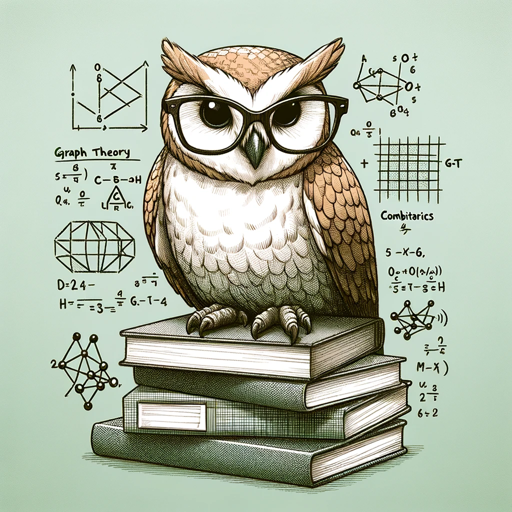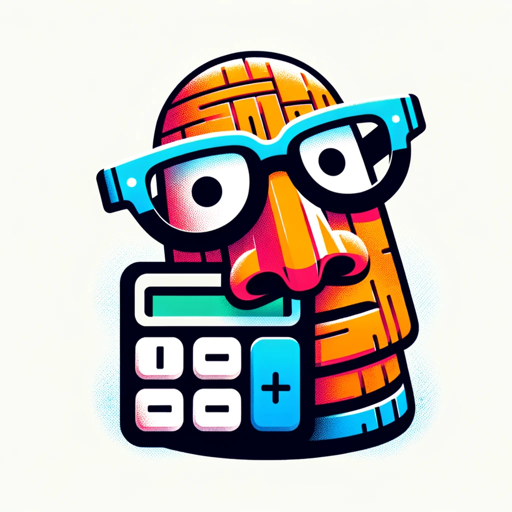Discrete Mathematics-discrete math problem solver
AI-powered Discrete Mathematics Solutions
Solve this discrete math problem:
Explain this concept in discrete mathematics:
What is the significance of this theorem in discrete mathematics?
Related Tools
Load More
math
Solve Advance Math questions with Concepts & Steps using Image or Text. Previously Math Expert.

Discrete Math Tutor
Guiding students in understanding discrete math.

Advanced Math and Matrix Expert
Deep expertise in matrix diagonalization and applications.

Sugma Discrete Math Solver
Powered by GPT-4 Turbo. 128,000 Tokens. Knowledge base of Discrete Math concepts, proofs and terminology. This GPT is instructed to carefully read and understand the prompt, plan a strategy to solve the problem, and write formal mathematical proofs.

Digital Logic Design Tutor
Tutor for Digital Logic Design, offering detailed explanations and online research.

Theoretical Computer Science Expert
Solves tasks first, then explains in simple language, with video resources.
20.0 / 5 (200 votes)
Introduction to Discrete Mathematics
Discrete Mathematics is a branch of mathematics that deals with discrete elements and covers various topics such as logic, set theory, combinatorics, graph theory, and algorithms. Unlike continuous mathematics, which involves continuous variables, discrete mathematics focuses on countable, distinct elements. This field is essential for computer science as it forms the foundation for designing algorithms and data structures. Examples include using graph theory to model networks and utilizing combinatorics for counting and probability problems.

Main Functions of Discrete Mathematics
Logic and Proof Techniques
Example
Using logical operators and quantifiers to form precise mathematical statements.
Scenario
In computer science, logic is used to verify the correctness of algorithms through formal proofs. For instance, proving that a sorting algorithm correctly sorts any list of numbers.
Combinatorics
Example
Counting the number of possible configurations in a set.
Scenario
Combinatorics is used in cryptography to count the number of possible keys, ensuring secure encryption methods.
Graph Theory
Example
Modeling relationships between objects using vertices and edges.
Scenario
Graph theory is applied in social network analysis to find influential users or in logistics to optimize delivery routes.
Ideal Users of Discrete Mathematics Services
Computer Scientists
Computer scientists benefit from discrete mathematics by using its principles to develop efficient algorithms and data structures, ensuring software runs effectively.
Mathematicians
Mathematicians utilize discrete mathematics to explore theoretical problems and develop proofs, contributing to the advancement of mathematical knowledge.

Guidelines for Using Discrete Mathematics
Visit aichatonline.org for a free trial without login, also no need for ChatGPT Plus.
This is your first step to accessing the Discrete Mathematics tool.
Familiarize Yourself with Basic Concepts
Ensure you have a foundational understanding of discrete mathematics concepts such as sets, functions, relations, and graph theory.
Utilize Tool for Problem-Solving
Input specific discrete mathematics problems into the tool for detailed solutions and explanations, making use of various proof methods and algorithms.
Integrate into Academic Work
Apply the tool to assist with academic writing, homework, and research in discrete mathematics, ensuring you cite appropriately.
Regularly Review and Practice
Consistently use the tool to review concepts and solve problems to enhance your understanding and proficiency in discrete mathematics.
Try other advanced and practical GPTs
Web Code Analyzer
AI-powered web vulnerability detection tool.

Product Copywriting Description + CVR Optimizer
AI-powered copy to boost conversions
Copywriting Coach
AI-Powered Copywriting Made Simple

Idiomatic Content Optimizer Pro with Copywriting
AI-powered content enhancement and SEO optimization.

Continuous Line Art Designer
AI-Powered Continuous Line Art Creation

Logo Designer
AI-powered logo creation made easy

Larry— Investment Banking Analyst
AI-powered expert for finance students.
Voice Architect
Transform your writing with AI-powered precision

Avatar Utópico do Pedro Sobral | Gestor de Tráfego
Optimize and Scale Your Ad Campaigns with AI.

Age Shift Portrait
AI-driven age transformation made easy

Personal Branding Advisor
Elevate Your Personal Brand with AI

Big Sis Marketer
AI-powered marketing guidance and job search

- Problem Solving
- Homework Help
- Concept Review
- Algorithm Design
- Research Aid
Q&A on Discrete Mathematics
What is Discrete Mathematics?
Discrete Mathematics is the study of mathematical structures that are fundamentally discrete rather than continuous. It includes topics like graph theory, combinatorics, and logic.
How can Discrete Mathematics be applied?
Discrete Mathematics is used in computer science for algorithms, cryptography, and network theory. It's also essential in fields like operations research, bioinformatics, and software development.
What types of problems can the Discrete Mathematics tool solve?
The tool can solve a variety of problems including proofs, combinatorial problems, graph theory issues, and logic puzzles.
What are some common methods of proof in Discrete Mathematics?
Common methods include direct proof, proof by contradiction, proof by contrapositive, and mathematical induction.
Can the Discrete Mathematics tool assist with learning?
Yes, the tool provides step-by-step solutions and explanations, making it a valuable resource for learning and mastering discrete mathematics concepts.